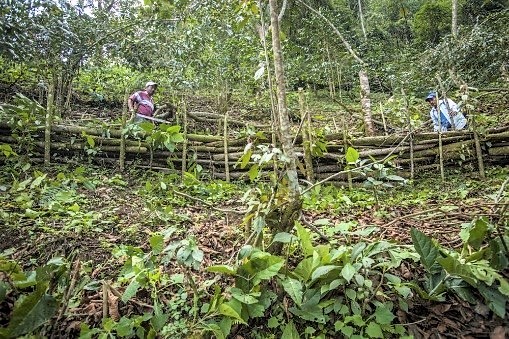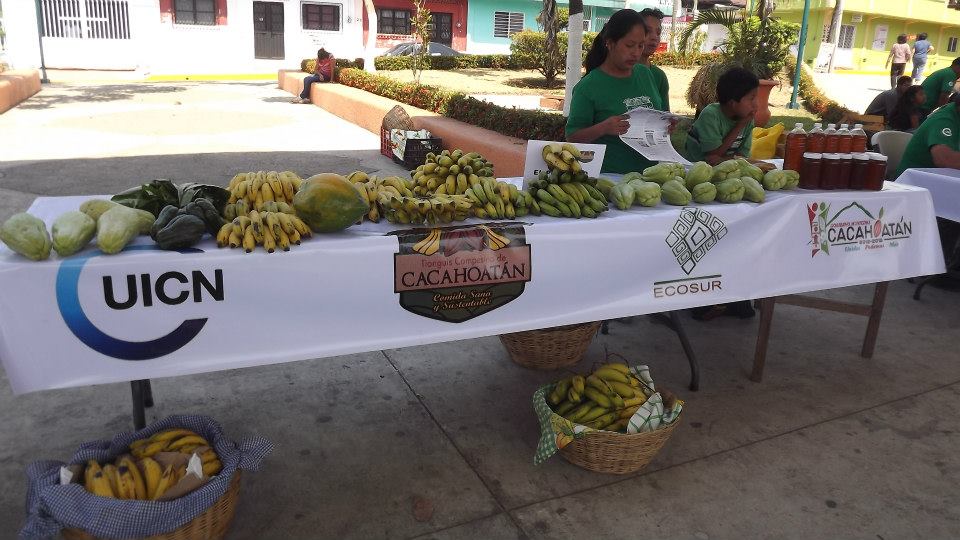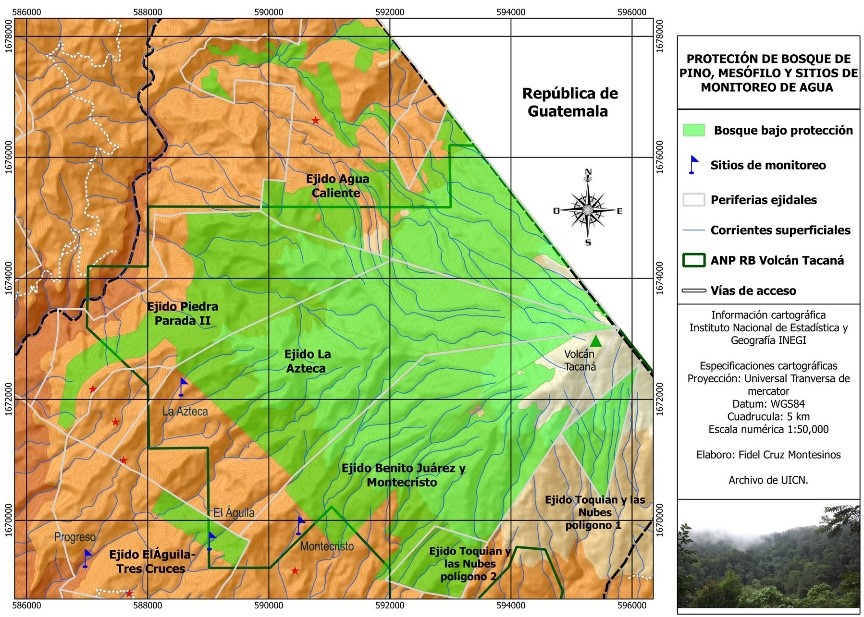



Après avoir analysé les vulnérabilités et les priorités en matière d'adaptation, les ejidos La Azteca et Alpujarras ont cherché à protéger les services écosystémiques fournis par leurs forêts (captage de l'eau, biodiversité, structure du sol et de la fertilité) afin d'améliorer leurs moyens de subsistance et leur résilience face au changement climatique.
Les mesures et actions suivantes ont été mises en œuvre pour faire face aux fortes pluies, aux tempêtes et à l'érosion, et pour améliorer la résilience des écosystèmes, la rétention de l'eau dans le sol et l'eau en aval.
1. Protection et restauration de la forêt nuageuse dans la réserve du volcan Tacaná. Les actions spécifiques ont été les suivantes
- régénération naturelle des zones forestières dégradées
-
reboisement avec des espèces indigènes
-
mesures de prévention des incendies de forêt, telles que les coupe-feu
- pratiques de conservation des sols
- surveillance pour prévenir l'exploitation forestière illégale, la chasse et l'extraction illégales de la flore et de la faune, les incendies de forêt et pour détecter les épidémies de parasites.
2. Optimisation des systèmes agroforestiers :
- Pratiques de conservation des sols (par exemple, clôtures vivantes, terrasses et brise-lames, petites constructions naturelles). Les clôtures vivantes utilisent des espèces végétales pour diviser les parcelles, fournir de l'ombre et protéger contre l'érosion.
- introduction d'espèces forestières et fruitières dans les plantations de café (cultivées à l'ombre).
Ces mesures ont permis d'améliorer et de maintenir la résilience et l'intégrité de la forêt naturelle.
- Les assemblées d'ejidos, qui sont des entités (décisionnelles) importantes des communautés du Chiapas, sont essentielles pour la mise en œuvre, le suivi et l'évaluation à long terme des mesures d'adaptation au changement climatique dans le cadre de l'EbA. L'Ejido est une structure foncière du Chiapas, au Mexique.
- L'existence du système de paiement pour les services environnementaux, qui fonctionne au Chiapas depuis 2012, a été déterminante pour soutenir les actions et dégager des fonds pour la gestion durable des forêts mésophiles de montagne et des systèmes agroforestiers (~4000 ha).
L'objectif principal de la solution était d'améliorer la résilience des communautés et des écosystèmes face aux impacts liés au climat. Pour ce faire, des mesures d'EbA ont été mises en œuvre en combinaison avec des mesures synergiques d'adaptation communautaire, certaines stratégies d'atténuation du CO2 (telles que le paiement des services écosystémiques pour la protection de la forêt) et la gestion intégrée de l'eau du bassin hydrographique de Cahoacán (où se trouvent les communautés).
Un enseignement important est que les mesures d'EbA ne peuvent pas être isolées, mais doivent être prises à l'échelle d'un bassin ou d'un micro-bassin pour avoir un impact sur les services écosystémiques liés à l'eau.